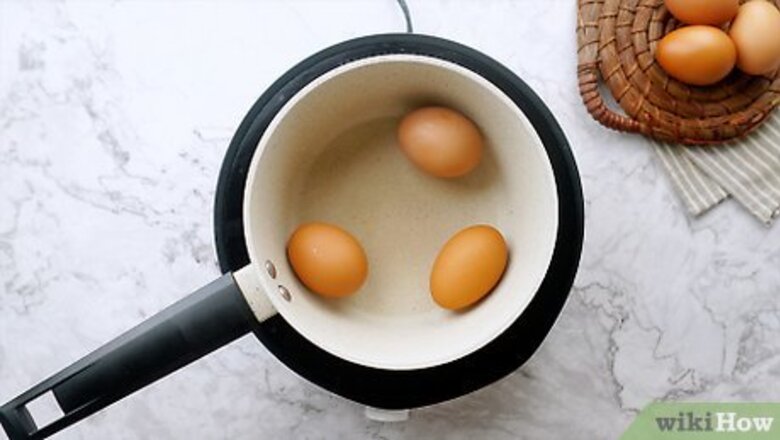
views
X
Research source
While you can purchase this product online, you can also make egg oil at home by boiling the eggs 2 to 3 cups (470 to 710 mL), then cooking the hardened yolks until they form an oil-like consistency. Once you’ve made a batch of this oil, you can apply it topically by massaging it into your skin and hair.
Boiling the Eggs
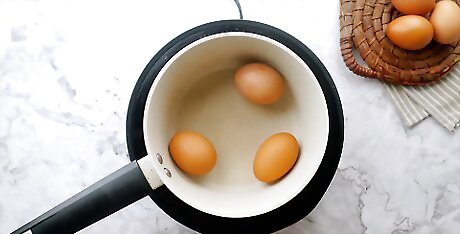
Place 3 eggs into a small pot on the stovetop. Set a small pot on the stovetop before turning on the heat. Take 3 large eggs and set them at the bottom of the pan. Make sure that there’s enough room for all 3 eggs to rest comfortably, so they all cook evenly later on. If you want to make a larger batch of egg oil, consider doubling the number of eggs in the recipe.
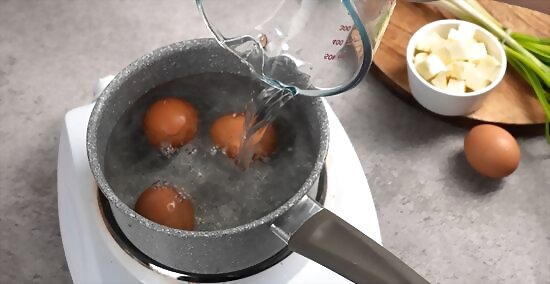
Pour water into the pot until the eggs are covered completely. Add 2 to 3 cups (470 to 710 mL) of cold water to the pot, submerging the eggs completely. Only fill the pot about ⅔-full, as you don’t want any water overflowing once it starts boiling. Once you’ve filled the pot with water, cover it with a lid.Tip: Make sure that the eggs are completely submerged in the water, or else they won’t boil properly.
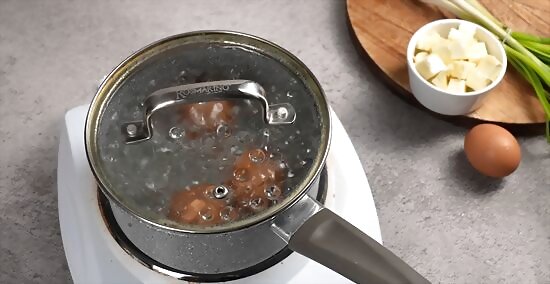
Wait for the water to reach a rolling boil. Turn on or light the stovetop burner beneath the pot of eggs. Keep the lid securely attached to the pot so the heat will be trapped inside, which allows the water to boil more quickly. The water has reached a rolling boil when you can see a lot of steam flowing from the pot. A large number of bubbles should be foaming and rolling throughout the water.
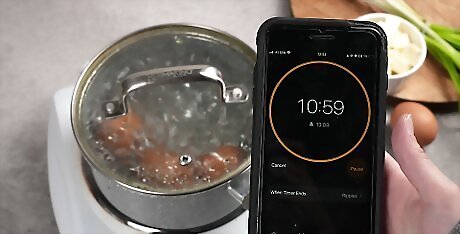
Set a timer for 11 minutes after the water starts boiling. While softer eggs require less time in the boiling water, you don’t have to worry as much about hard-boiled eggs. Once the timer goes off, turn off the stovetop burner and remove the lid from the pot. Be sure to wait at least 11 minutes so the eggs can cook all the way through. If you take the eggs out after just 6-7 minutes, you might end up with soft-boiled eggs instead.
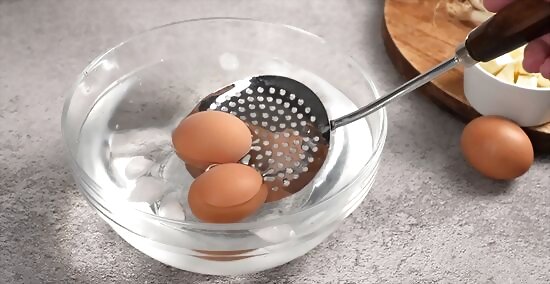
Place the eggs in cool or icy water for 2 minutes. Use a slotted spoon to scoop the eggs out of the hot water before gently placing them in a small bowl of cool or icy water. Let the eggs sit in the water for at least 1 minute before you start removing them. If the water is cool enough, you can remove the eggs from the pot by hand.
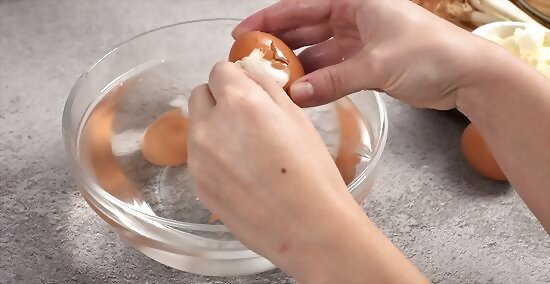
Peel away the shells from the hard-boiled eggs. Hold the eggs under cool running water to make the shell easier to pick off. Remove the outer shell from the eggs, discarding the pieces into the trash as you go. Don’t be discouraged if you can’t get it off in 1 piece—just do your best to remove it as thoroughly as you can. It’s no big deal if you don’t remove every speck of shell, as you won’t be using the egg white to obtain any oil. Feel free to compost your egg shells once you’re done with them.
Extracting the Oil
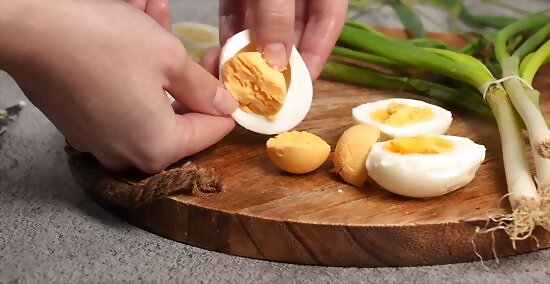
Cut through the egg whites to remove the hardened yolks. Use a spoon or the edge of your fingernails to break open the boiled egg white. At the heart of the boiled egg, you’ll see the hardened yolk. Use your fingers to pinch and scoop this yolk out. To keep all of the yolks in 1 place, set them aside in a small bowl. Don’t worry if the hardened yolk peels or chips as you’re removing it—that’s perfectly normal given how soft the yolk is.
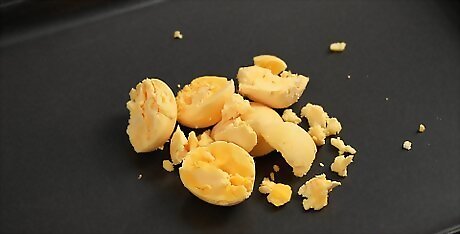
Place the egg yolks on a griddle set to high heat. Set a griddle on the stove and rest the egg yolks in the center of it. Turn on or light the burner beneath the griddle to the highest heat so the yolks can begin to cook and melt. Since the yolks are already cooked, it isn’t a big deal if you heat the griddle before placing the egg yolks on it.
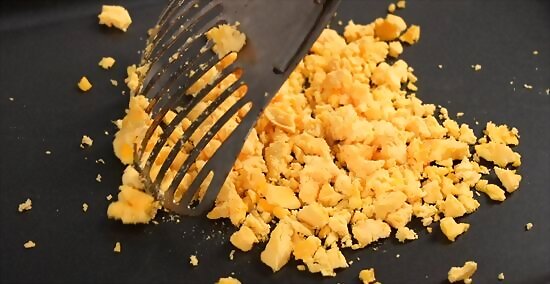
Break the yolks into pieces with a slotted spatula. Use the edge of a slotted or perforated spatula to chop the egg yolks into smaller pieces. Continue dividing the pieces until they start resembling scrambled eggs. As you mash up the eggs, try to keep them combined and in the center of the griddle. You might have to use a spoon to scrape any excess egg off the edge of your spatula as you go.
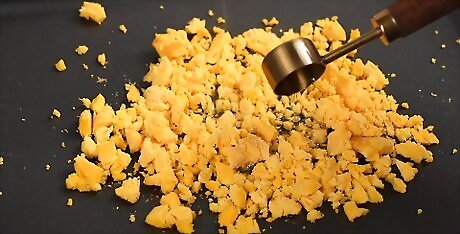
Dump 1 teaspoon (4.9 mL) of olive oil over the yolks. Don’t worry about the olive oil diluting any potential egg oil—it’s only purpose is to help the egg yolks cook faster. Make sure that the griddle is hot enough for the oil to immediately sizzle after making contact.
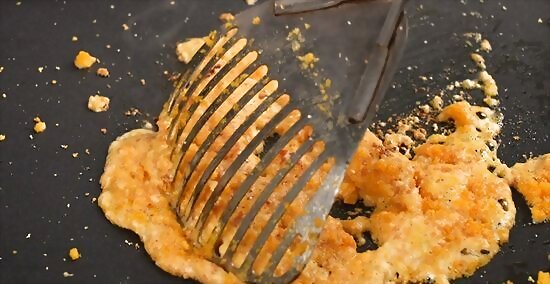
Continue breaking the egg yolk pieces and flipping them over. Keep mashing the egg yolks until they resemble more of a paste. Every few seconds, flip the eggs over keeping them pushed to the center of the griddle. At this point, the eggs might smell overcooked or on the verge of burning, which is normal for this process. If you see any excessive smoke, it probably means that a specific patch of egg yolks is burning. Avoid this by flipping the eggs over consistently. Be sure to turn down the heat whenever this happens.
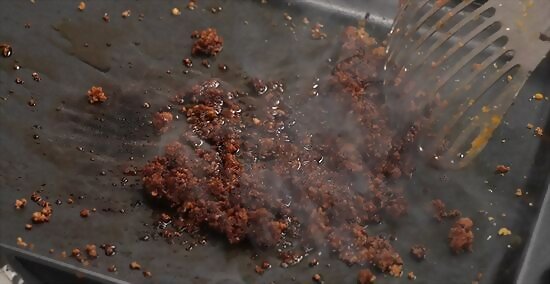
Keep cooking the yolks for 3-5 minutes, or until the yolks look dark brown. Continue the same process for several more minutes, flipping and centering then egg yolks into the middle of the griddle. Wait for the eggs to start foaming, liquefy, and then turn a dark brown color. At this point, you can turn off the heat.
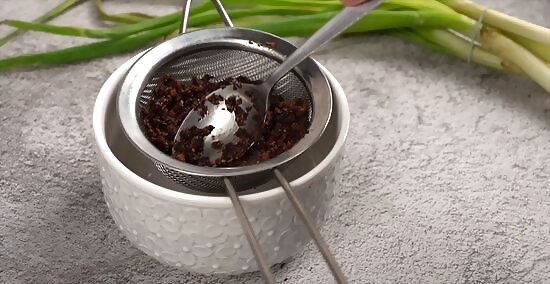
Pour the cooked yolks through a strainer into a bottle to get the oil. Get the egg oil ready for storage by pouring the cooked yolk mixture through a small, circular strainer. Watch as a dark brown liquid flows into the bottle, while solid pieces of the yolk mixture are left on top of the strainer instead. Continue straining the mixture until the oil looks clear.
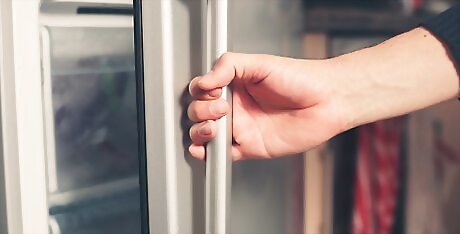
Refrigerate the egg oil in a small glass or ceramic bottle for 3-4 years. Wait 30 minutes or so for the oil to cool before capping the bottle to keep it airtight in storage. Depending on how much oil you’ve made, feel free to use more than 1 bottle in the storage process. Don’t pour anything else into the bottle, or else the egg oil won’t last as long.
Applying Egg Oil to Your Hair and Skin
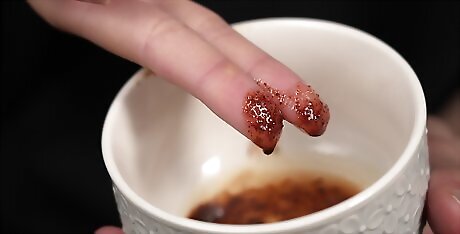
Pour a coin-sized amount of oil onto your fingers and rub it into your fingertips. Drizzle a small amount of egg oil onto the tips of your fingers. Rub your hands together to spread the oil evenly over your fingertips to allow for a smooth, even application. If you have longer hair, you might need to pour out a little more oil. While you want to coat your scalp and hair with a thin layer of egg oil, you don’t want to apply a thick layer of product to either of them.

Rub the oil into your scalp and cover your hair from root to tip. Knead your fingertips all around your scalp, focusing especially on the roots of your hair. Once you’ve covered your scalp, massage your fingers through your hair to get an evening coating on most of the strands. Feel free to use more product as necessary depending on your hair length and density.

Leave the oil in your hair for 3-12 hours. Let the oil sit in your hair for at least 3 hours, or allow it to soak in overnight. Don’t wash your hair until you’ve left the egg oil in for the desired amount of time. If you rinse the oil out too early, then it might not have the desired effects. Wrap a towel around your hair if you’re leaving the oil in overnight.

Wash out your hair once you’ve let the oil sit for several hours. Take a shower and clean out the egg oil with your usual shampoo. Massage your fingers through your scalp to make sure that you’ve removed all of the egg oil. Follow up with your usual conditioner. Be sure to use shampoo to remove the egg oil from your hair instead of rinsing it out with just water! For this treatment to be most effective, use egg oil in your hair about twice a week.Did you know? You can use warm or cold water for this—unlike regular eggs, you don’t have to worry about egg oil getting “cooked” in the shower.
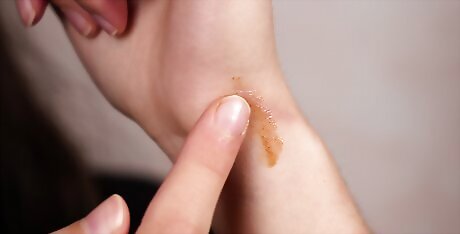
Apply the oil to dark spots and scars on your skin to reduce their appearance. Pour a pea-sized amount of oil onto your fingertips and rub them together. Next, swipe over the aging or dark spot with your oil-coated finger. Repeat this treatment several times a week for maximum effectiveness.




















Comments
0 comment